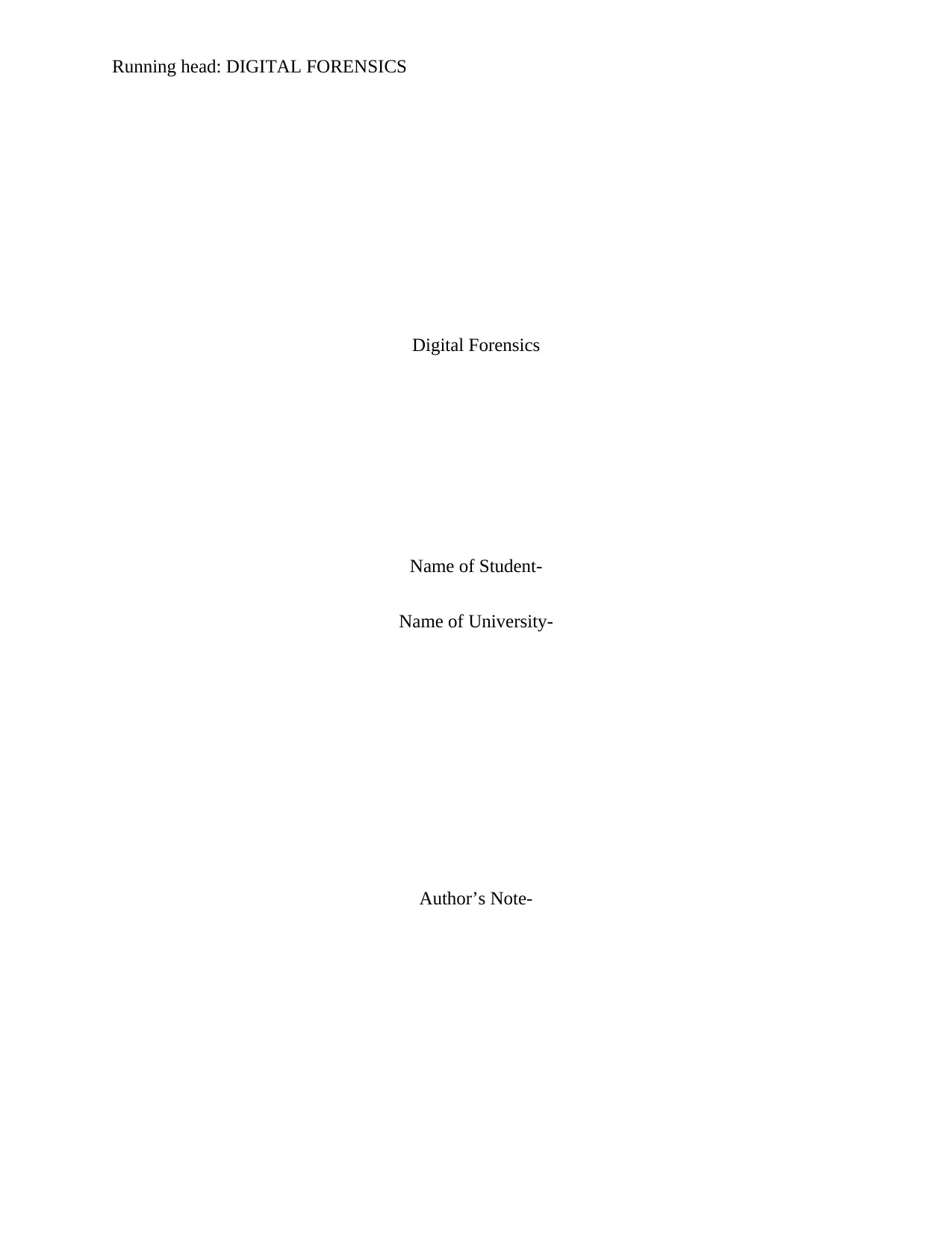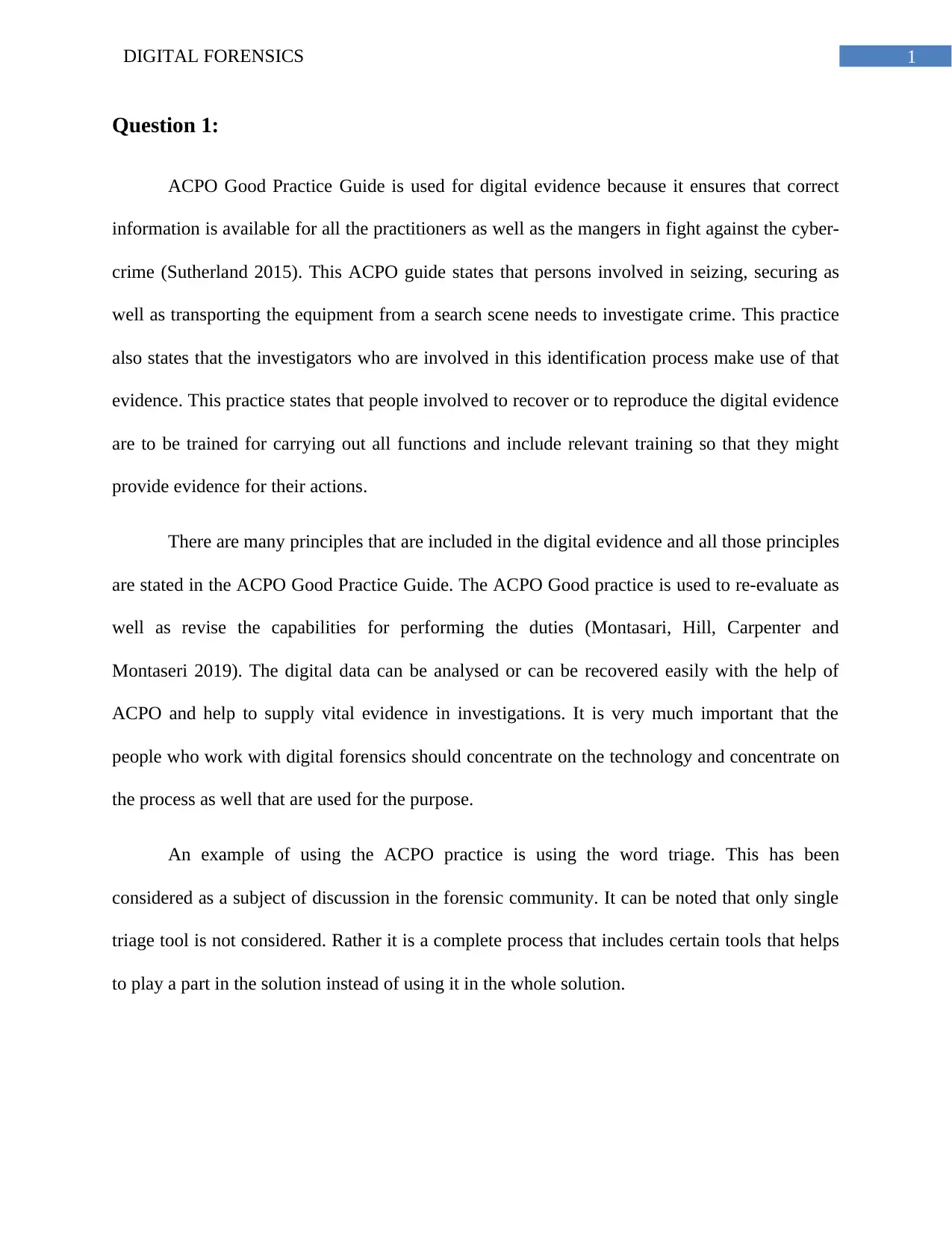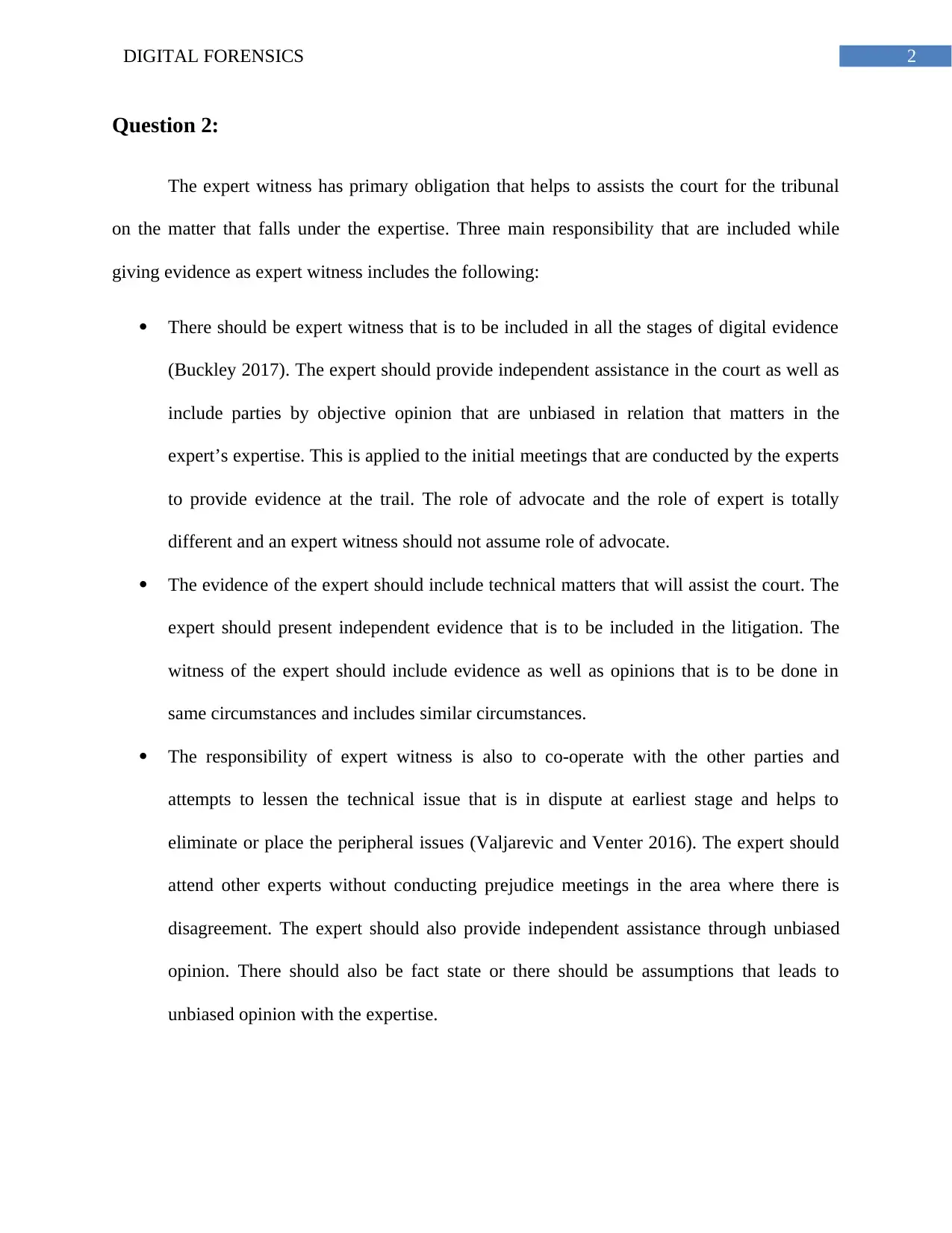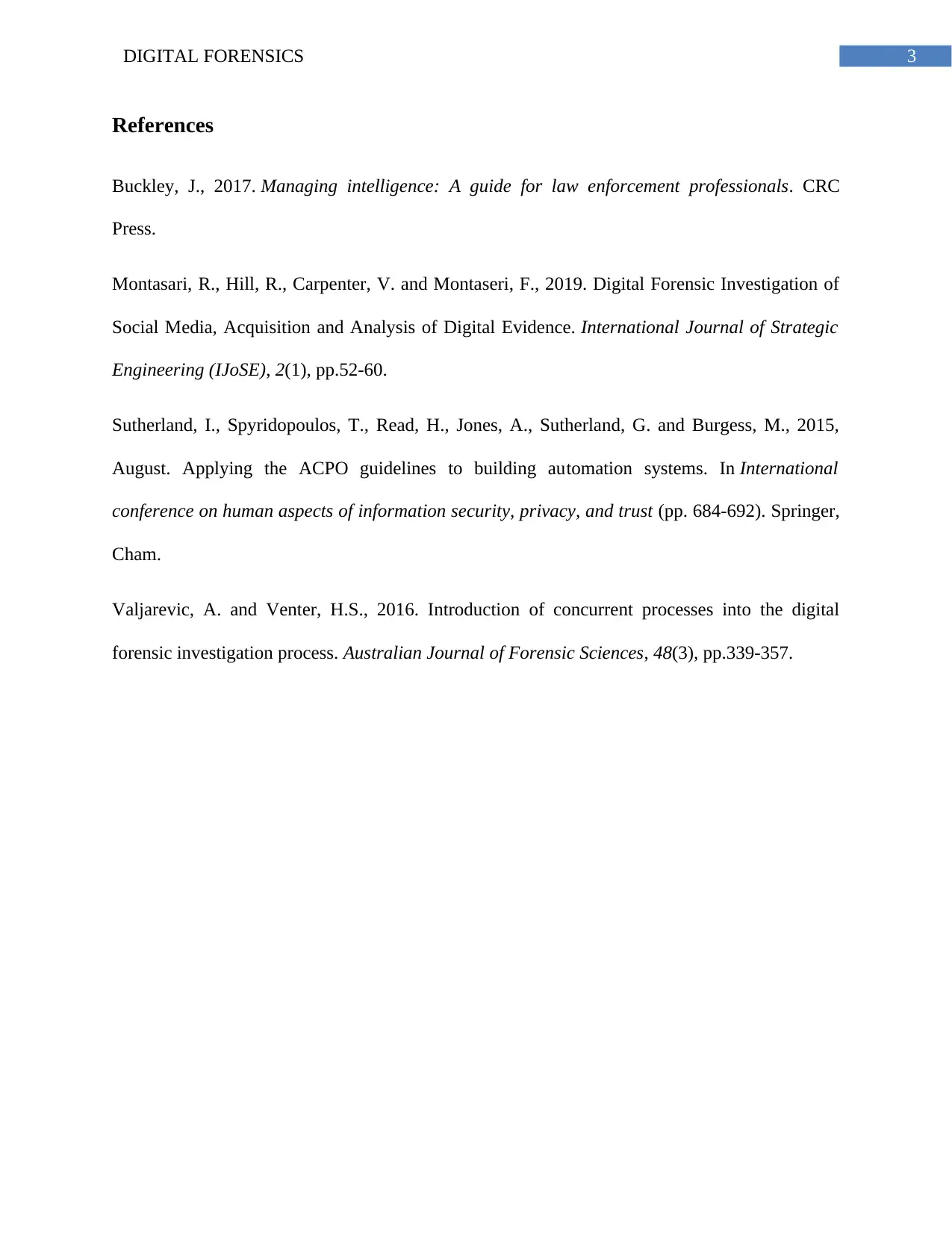Digital Forensics: ACPO Guidelines and Expert Witness Responsibilities
VerifiedAdded on 2022/11/27
|4
|772
|336
Homework Assignment
AI Summary
This document presents a solution to a digital forensics assignment, focusing on two key areas: the ACPO Good Practice Guide and the role of an expert witness. The first section explains the importance of the ACPO guide in digital evidence handling, emphasizing its role in ensuring accurate information for practitioners and managers in cybercrime investigations. It outlines the principles of digital evidence, the importance of training, and the application of the ACPO guide, using the example of triage in forensic analysis. The second part of the assignment solution delves into the responsibilities of an expert witness, highlighting the obligation to assist the court and provide unbiased, independent opinions. It details the three main responsibilities, including providing independent assistance, avoiding the role of an advocate, presenting technical evidence, cooperating with other parties, and attending meetings with other experts. The solution references several academic sources to support the arguments presented. This resource, available on Desklib, can be used by students to understand the core concepts of digital forensics and the responsibilities of professionals in the field.
1 out of 4











![[object Object]](/_next/static/media/star-bottom.7253800d.svg)